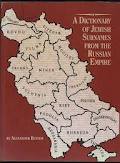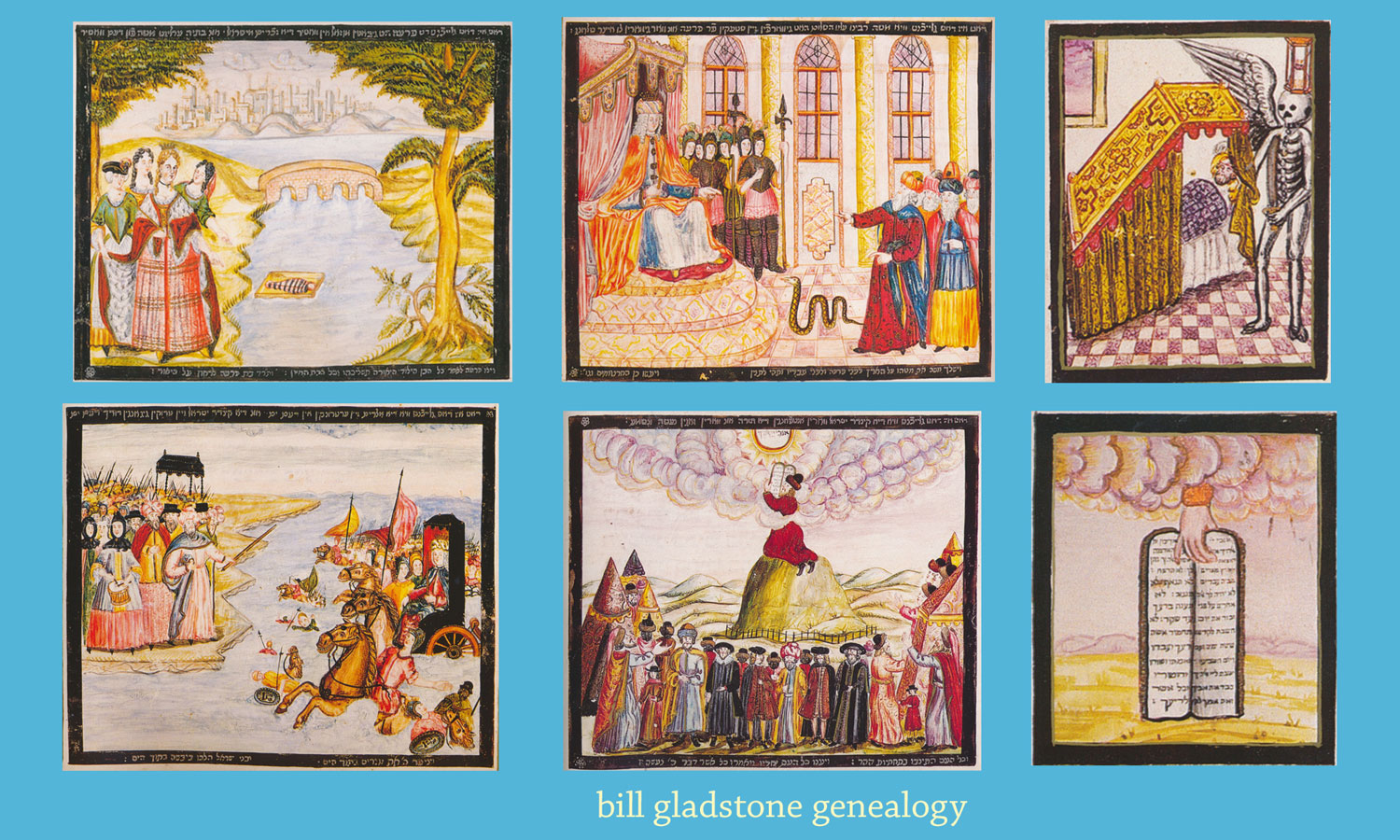 When the first edition of Alexander Beider’s Dictionary of Jewish Surnames From the Russian Empire came out in 1993, it was hailed in genealogical circles as one of the most important books ever printed about Jewish surnames. His subsequent compilations of Jewish surnames from Poland, Galicia and other regions have only solidified his reputation as a foremost authority in the field.
When the first edition of Alexander Beider’s Dictionary of Jewish Surnames From the Russian Empire came out in 1993, it was hailed in genealogical circles as one of the most important books ever printed about Jewish surnames. His subsequent compilations of Jewish surnames from Poland, Galicia and other regions have only solidified his reputation as a foremost authority in the field.
Beider recently updated the Dictionary of Jewish Surnames from the Russian Empire, a Herculean task that took four years. The revised edition has just been published by Avotaynu, the New Jersey-based Jewish genealogical publishing house. At 1,000 pages in hard cover, it’s nearly 50 per cent larger than its predecessor. The original work has about 50,000 surname entries, the new and improved version about 74,000.
Beider considered the revision necessary because of the explosion of new sources and knowledge that has occurred over the last 15 years due to the collapse of the Former Soviet Union, the rise of the Internet, and the publication of numerous related new works. He expanded the work’s geographical range, altered hundreds of entries, and added many new cross-references.
The Moscow-born statistician, linguist and onomastician, who has lived in Paris since 1990, is credited with almost single-handedly revolutionizing the field of Jewish onomastics. Before Beider, most researchers rehashed names and ideas from the published literature with little scientific method and little regard to where the names occurred geographically. One of Beider’s central methodological principles was to link surnames to the geographical regions in which they originated, and he was the first to do an inductive survey of surnames based on primary sources such as old voters’ lists, censuses, civil records and other archival material.
Browsing through the Dictionary reminds us how often our surnames contain capsulized references to our ancestral past. In the late 18th and early 19th centuries when Russian Jews were obliged to adopt surnames, many took names of patronymic or matronymic origin — derived from a father’s or mother’s name — reflecting traditional Hebrew naming customs. Such names include Meyerovitz (son of Meyer), Davidovitz (son of David) and Gitlin (from the female name Gitl) thus preserving the name of an ancestor.
The plentiful class of surnames inspired by occupations offer glimpses of an outmoded village way of life. The name Bodgas (from German), for instance, means “bathhouse”; Cherednyak (Belarusian) is “cattle shepherd”; Drach (Yiddish) is “hand mill”; Fajnshrajber (Yiddish) is “calligrapher”; Gitelmakher (Yiddish) is “cap maker”; Goren (Ukrainian) is “forging furnace”; Katsov (Hebrew) is “butcher”; Latkemakher (Yiddish) is “maker of pancakes”; Milkhiker (German) is “dairyman”; Pakhter (Yiddish) is “leaseholder”; Plytnik (Belarusian) is “raft driver”; Shkolnik (Belarusian) is “beadle, sexton in a synagogue”; and Torgovets is “tradesman” (Russian).
Surnames derived from place names are also common. The name Bobrushkin is linked to the town of Bobrujsk, Drubicher is linked to Drubich, Gordon to Grodno, Mogilevich to Mogilev, Polyakov to Polyak, Slobodkin to Slobodka, Usyshkin to the Usyskin River. Many surnames are unique to a particular town or region, but may be difficult or impossible to find on a map. (For assistance, see Where Once We Walked, the award-winning shtetl locator by Gary Mokotoff and Sallyann Sack.)
When surnames became mandatory, many Jews took names based on personal characteristics (such as Langbart, meaning “long beard”) or pleasant associations (Feldblum, Goldberg, Rosenstein, Silverman). A small but well-documented subcategory of “ridiculous” surnames includes such monickers as Brodavka (wart) and Dolgoshiya (long-necked). One pictures disdainful bureaucrats holding their noses as they assign laughable and even disrespectful last names to the poor Jewish applicants summoned to appear before them.
Other surname categories include rabbinical names and names of Kohen or Levite origin. For example, Beider links the famous name of Chagall to Segal, a Kohenite acronym of Hebrew origin dating back to the 11th century.
The Dictionary’s 200-page introductory section illuminates the dark process of how Jews acquired their family names. These opening chapters discuss the history of Jewish names in Eastern Europe, their types and morphology and linguistic aspects, the patterns of their adoption, the overlap of Jewish and Gentile surnames, and the author’s scientific approach. Although densely written and highly technical, this material may fascinate those seeking to understand how, when and why Jewish surnames derived in the former Pale of Settlement.
A statistician at heart, Beider throws in statistical charts whenever possible, such as his percentage tables of the most common Jewish surnames in the various Russian provinces. Based on 1912 data, the most common names in Vitebsk region were: Kagan, Levin, Gurevich, Ginzburg, Ioffe, Rabinovich, Sverdlov, Rapoport, Shapiro and Livshits. The list for Grodno shows Kaplan, Levin, Lev, Epshtejn, Kagan, Goldberg, Fridman, Shapiro, Rabinovich and Vajnshtejn.
Despite the high reliance on mathematics, the science of Jewish surnames can never be exact, since overlapping layers of meaning and language inevitably lead to ambiguities. Beider’s forthright discussions of such ambiguous derivations are enlightening. One must applaud his unfailing fidelity to the facts and his refusal to alter them to fit theoretical constructs.
Those who wish merely to look up the etymology of a surname should turn directly to the Dictionary of Surnames, which takes up remaining 800 pages of the book. A smaller softcover volume accompanies the Dictionary and provides an invaluable Soundex listing of all the surnames within, so the correct entry may be found no matter how the name is spelled.
Before consulting the Dictionary, it’s best to have some basic knowledge about the surname one is curious about. It’s important to know, for example, that the name Chambers was once Cherkofsky, Pearson was once Persovsky, or Yarmouth was once Yarmolinsky. Many of our old-fashioned names did not survive the Holocaust or the process of immigration to the New World and the dual cultural influences of anglicization and Americanization.
Ardent genealogists may want a Dictionary of their own for home use; others will be content to consult it in a synagogue or reference library. Beider’s dictionaries for Poland, Galicia and other regions are also recommended. For details, please visit www.avotaynu.com ♦
© 2009





